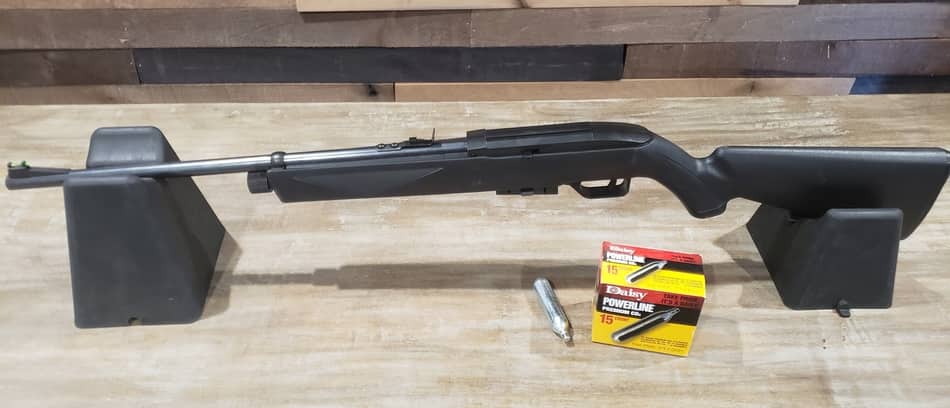
I know why you’re here (probably not actually, just roll with it); your teenager wants to shoot airguns, and you want to keep them safe while giving them something they can enjoy. So, what’s the best airgun for a teenager?
A teenager will need an airgun that they are responsible enough to handle, and that they can pump reasonably well. A multi pump airgun will work great for a younger teenager while a more mature teenager may find a springer airgun will work well for them.
For the purposes of this article, I’m going to talk about recommendations for two groups of teenagers; the thirteen to fifteen year olds and the sixteen to eighteen year olds, because you parents know that there is a HUGE difference in the maturity of a teenager in those two camps (at least if I remember my own upbringing properly). Now, on to the nuance!
Why Do I Want an Airgun for My Teenager?
The answer to this question will largely determine what will best suit your teenager. If you are looking for something to help teach gun safety before moving on to normal firearms, or even more powerful airguns, then you probably are not looking for a top-of-the-airgun-food-chain precharged pneumatic (the type that almost all serious adult airgunners shoot).
The simple lower powered lever action BB guns like the Red Ryder can suit this purpose well, but might not be as satisfying as something more powerful.
A multi pump airgun such as the Crosman Recruit — the airgun that my little brother started out on– would feel more real, at least to me, and the great thing about multi pump airguns is that you can pump anywhere between three and ten pumps, changing your power output to suit your needs.
— the airgun that my little brother started out on– would feel more real, at least to me, and the great thing about multi pump airguns is that you can pump anywhere between three and ten pumps, changing your power output to suit your needs.
Even at maximum power, you should not expect more than 650 feet per second out of a typical multi pump, while at the minimum amount of three pumps, a little over 300 fps could be expected. That lower end on the range is where most low powered BB guns rest, and is enough power to cause injury at point blank range.
About 500 feet per second will be enough to cause a lethal injury if a shot is placed just right (or maybe placed just wrong?). Anyway, an airgun like a multi pump can be used for that younger group of teens to have fun plinking while also learning basic rules for gun safety. These guns make great entry-level airguns for younger groups and beginning marksmen.
Now, if your teenager is already familiar with basic gun safety, and has beefy enough arms, a break barrel springer airgun could very much work well for them.
These guns come in more spicy flavors than the multi pump ones do, having a wider array of available calibers, more power, and usually coming in a style that closely resembles a powder burning hunter’s gun. These guns are also the most common type of airgun out there, with most airgunners having at least one.
These guns are great for target shooting, bird and other small game hunting, and just general practice. A springer gun will usually shoot between 800 and 1200 feet per second, sometimes clawing their way up to 1450 feet per second. That’s like… really fast.
The norm though is about 850 feet per second, the ideal speed for accuracy. Too fast, and the pellet generates extra turbulence and destroys its own accuracy, too slow and the wind and gravity have more time to push or pull it around.
Springers, especially break barrel springers, come with a few additional challenges that other airguns don’t have.
Springers need to have their springs compressed somehow, and that somehow is through you. There will be some sort of lever on a springer, and that can come in under lever action, side lever action, or break barrel action, where the barrel becomes the lever.
Pull that lever to charge the spring and open the barrel to load the pellet. Whatever the method used to compress the spring, you will have to supply the force needed to do so, and usually that force comes out to be about 20-35 pounds. A youngster may have trouble cocking the gun if he or she has trouble lifting a 20 pound dumbbell.
This increased force of compression needs to be handled once every shot, and you need to be careful about safety while you do so.
When loading, it is good safety practice to keep a hand on the end of the barrel, as this will allow you or your teenager to keep the barrel clamping down on your fingers in the rare event of a mechanical failure.
The first is the fact that a break barrel springer has a barrel that moves often, and when it comes back into place, it may be a milimeter off of before you opened the barrel.
The challenges associated with a springer gun are what make them great for practice. Many airgunners report that learning to handle a springer while shooting greatly increases their shooting skill in general.
This is in part because the kickback of the springer is unique when compared to other types of guns in general. The mechanical motion of the spring jumping forward when you pull the trigger is what causes the kickback, but it isn’t just pushing against you, the spring is vibrating in ways that compressed air and exploding gases simply cannot.
Because of that, when a marksman learns to handle a springer gun, they improve leaps and bounds, so if your teenager wants to practice their general skill as a shooter, a springer may work very well for them.
What Other Options are Out There?

Other airgun options include the PCP, CO2 powered airgun, and the basic lever action BB gun. These are all great options in addition to a multi pump or a springer, though they may not be appropriate for every age.
CO2 airguns employ a canister of compressed carbon dioxide, that is under so much pressure that some of it becomes liquid, and then flash boils to replace any gas that you expend as you shoot. Typically, these guns are not as powerful as springers or PCP’s are, but that may be the appeal for a parent who wants a happy medium between safe and powerful.
One CO2 rifle that I have shot before and enjoyed shooting is the Crosman 1077 . Its semi automatic, easy to use and reload, and has a lower muzzle velocity, making it safer for your teenager to use.
. Its semi automatic, easy to use and reload, and has a lower muzzle velocity, making it safer for your teenager to use.
CO2 airguns are also popular for competition level shooting, having little recoil, a muzzle velocity ideal for accuracy, and the cocking effort is easy, without requiring you to move the entire gun in order to get your next shot both powered up and loaded.
A CO2 airgun is not well suited for hunting small game typically, unless you are an incredible shot and can hit the head consistently every time. If your teen wants to dispatch birds or squirrels, this is probably not the way to go unless he or she is okay with being almost within spitting distance of the quarry.
Precharged pneumatics come with the same advantages that a CO2 airgun does, just with a beefier power output. Where the CO2 cartridge will have about 850 psi contained, a PCP lower end PCP will have about 2000 psi in their tanks, and most will have 3000 psi for a max fill, somtimes more.
The considerably greater power of a PCP combined with the typically better accuracy inherent in a fixed barrel gun make these things the best option for hunting.
Almost all serious airgunners have a PCP in their arsenal, but even though they are the most powerful type of airgun, a PCP will rarely match the power of a firearm, so while they can be dangerous if used improperly, they are not as dangerous as a firearm.
PCP’s are by far the more expensive option though. Where a springer, CO2, or other airgun would be considered expensive at two or three hundred dollars, a PCP would be considered cheap at that same price. That isn’t including the additional equipment you need to purchase in order to keep it charged.
A PCP needs to have its tank refilled constantly back up to that two or three thousand pounds per square inch, and the equipment to do so can cost anywhere between $100 for a manual pump (whose frequent use could be its own workout routine), $350 for an external tank, and $400, $500, or more for a pump do do the job for you.
Because of the additional expense associated with a PCP, even the lower powered ones do not make great starter airguns unless you are serious about getting into and staying into the sport, an idea that is reinforced by the fact that even lower powered PCP’s are more powerful than most other types of airguns.
If you and your teen plan on staying in the sport for a while, these could potentially make a good option for a responsible family prepared for the cost.
What Specific Guns Would You Recommend?
Admittedly, I am not yet a parent, but reflecting upon my own youth, and employing the knowledge that I have about this subject, if my child were interetsted, then on their thirteenth birthday they would get a multi pump airgun, and come the sweet sixteen, they get a springer.
Hopefully, you would have been able to draw conclusions from this article that help you make an informed decision about what to get for your family, but if not, then know that the above paragraph is my plan. A gun such as the Crosman 1077 may also have a place in my family in the future as well.
In the years intervening between now and then though, the market is likely to change… a lot, so my choice of specific guns to choose is likely to change as much, but if these events were to happen today, then I would choose the Crosman Recruit for the thirteenth birthday, and the Ruger Blackhawk for the sweet sixteen, both of which are guns that I have enjoyed shooting.
